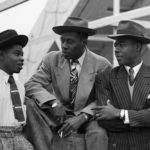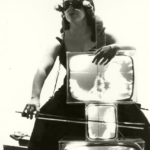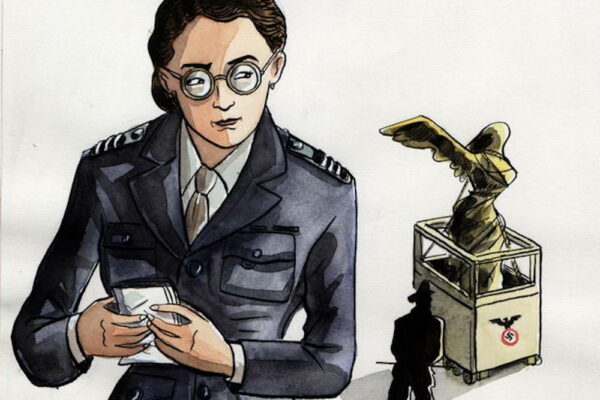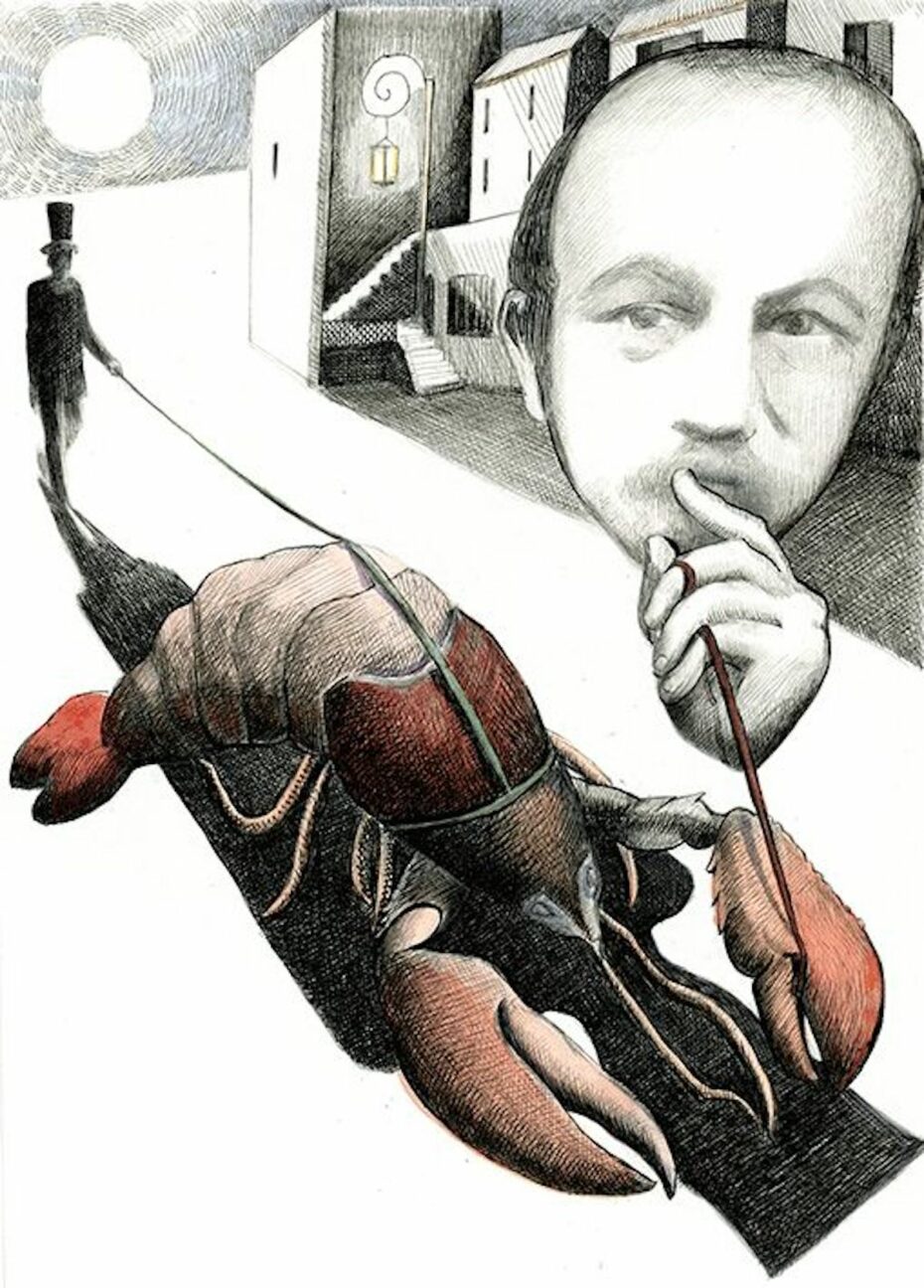
To be a Bouzingo was to be a part of a counter-culture group that wouldn’t go down in history, but would give birth to bohemianism as we know it. A mere footnote of the Belle Epoque, and yet this group of young and wild creatives of late 19th century Paris defined and changed the avant-garde art for good, building up the inspiration for many a movement and bohemian rebels to come. The term Bouzingo (or bouzingot) itself, was given to the group as a means to mock them; a derogatory term created by the conservative press, which roughly translates to the vice-seekers that frequented dive bars and whorehouses. Barely documented in any meaningful way, the elusive circle consisted of Paris’ most electric and eccentric creators of the day, who’s prerogative it was to piss of the bourgeoisie.
The thing about the Bouzingos is that they, in all their hasty, crazy performances of living, paved the way for hippies smoking hash, the punks, the beats, and the brats. You could say they are responsible for the concept of expecting the unexpected of the youth. They bolstered the ‘Lost Generation’, the Surrealists and the Dadaists. The outlandish nature of the community was built to break barriers down for anyone who might be considered too loud and bizarre to fit within the banal collective. They lived “free love” more than a century before the term was coined. They were libertines and punks; freaks if you will. They inspired literary movements such as Parnassianism which advocated “art for art’s sake.” Playwrites, painters, and poets – oh my! If you could create, you probably could have been a Bouzingo.
One of the few researchers dedicated to resurrecting the subculture into modern consciousness, describes them as such:
The Jeunes-France lived collectively in voluntary destitution, their house devoid of furniture but filled with Bouzingo murals of Classical and erotic traditions, writing and spreading seditious drinking-songs at working-class pubs, plotting and carrying out various provocations of the bourgeoisie in the streets, experimenting with opium and hashish, orchestrating orgiastic parties involving dances requiring pistols fired into the ceiling, holding philosophical debates nude in their back yard, hurling fake corpses from their windows into the street, engaging in various occult and alchemical practices, and carefully cultivating an elaborate gothic mythology about themselves, in which they drank wine from their parents’ skulls, stocked their otherwise bare rooms with exotic weaponry, and kept human fetuses in jars on their mantelpiece.
At the same time as being considered social delinquents, they were also producing a very wide array of work in a number of different mediums, often collaboratively, from gothic novels to classical sculpture to politicized plays and operas to translations from French and German to erotic prints to buildings to history paintings to Byronic poetry to opaque prose poems and more.
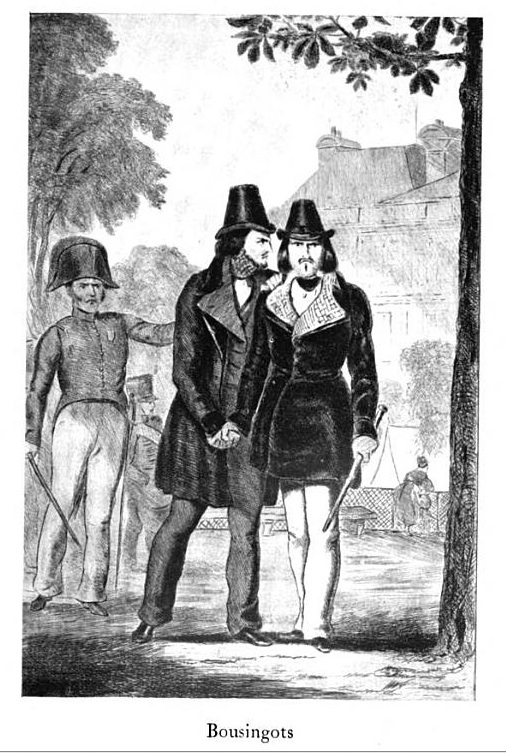
Originally known as “Les Jeunes de France”, before the conservative press gave them a new name, the Bouzingos were also memorable for their image and style, although there is very little historical record to go by. Some accounts claim their sartorial colour of choice was red, as a symbol of fire and blood, of anger and change. Leon Gozlan wrote of them, “it’s because red is the color of one of the three furies of mythology, furies which are their color; it’s because red makes itself with firewood, like wine.”
After having worn out the patent leather hat and the large blue ribbon, he’s just adopted the red hat. The bousingot wears the red hat; add on a hanging cord and two knots and the bousingot will be a cardinal. He was a sailor with patent leather, he’ll be a cardinal with the red hat…men who have red hats, a blue ribbon, and who would be tricolors it they had a white face and linens, are bousingots. The little cafes are overflowing with them, the Pont-Neuf is groaning with them, Sainte-Pelagie has them to spare, 10 the faubourg St-Germain abounds with them. A month ago, you could have seen them in black varnish; it’s too late, they’re red; the heat has colored them like lobsters, crabs and crayfish. They’re not harmful.Hurry to go and see them, be glad to encounter them, because soon, maybe tomorrow, they’ll have green hats like the penniless of old times, or blue hats, like leprechauns of the time when there were leprechauns, or the hats of free men, which is to say no hats.Hurry, because they’re still walking on their feet, they’re breathing with their noses, even if the nose is right in the center; we’re assured that they eat; it was confirmed to me that they think sometimes.You might well find them walking in carts, with gloves on their feet, slippers on their hands, if you catch them too late.
The Red Bousingot ( 1832 ) by Leon Gozlan
What we perceive about the Bouzingos is probably what they wanted us to see. They built up a powerful reputation and persona in order to enact change in art and society. It’s unfortunately difficult now to say how much they truly took part in their performances. Who knows which parts were fodder to create fear among the upper crusts of the polite society and which parts really happened? We rely mostly on rumour and biased media about the group now. There weren’t many objective sources on the inside. Oh to be of a trailblazing subculture lost to time!

Members of the group, such as writer Gerard de Nerval and Theophile Gautier (writer and artist) were known for mingling with friends outside of the micro movement, and often invited them to their legendary parties. It’s said that the Bouzingos were quite popular amongst the likes of Alexander Dumas, Chopin, Victor Hugo, and Eugene Delacroix. It’s also rumoured that they were invited to Bouzingo orgies, seances, and other sordid soirees. Some may credit these relationships to helping keep the legacy alive through rumour, recounts, and writing.
At the height of the Bouzingo reign, Gautier and Nerval joined forces with the famous flaneur, Charles Baudelaire to create Club des Hashischins – think the Parisian salons of the Belle Epoque but for potheads.
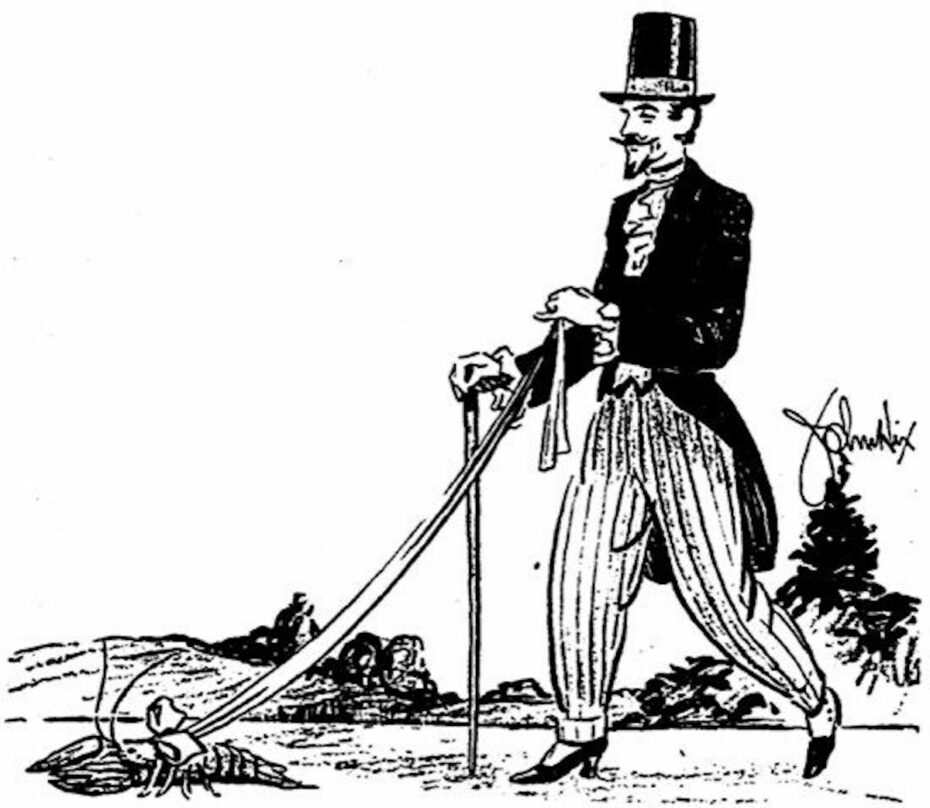
One of the most notable Bouzingos was Gerard de Nerval himself, a brilliant creative suffering from bouts of diagnosed insanity. It may have even inspired some of the avant-garde nature of their raucous chaotic parties and lives. One of the most infamous incidents of Bouzingo behavior is the story of a lobster called Thibault that Nerval regularly walked on a “leash” through the Palais Royale gardens in Paris’ 1st arrondissement. Adorning a crustacean with a blue ribbon, he said that it was a better pet than a dog because “they are peaceful, serious creatures who know the secrets of the sea and don’t bark.” An eerily similar version of this surreal image appeared in an episode of The Simpsons cartoon (of all things), in which Homer Simpson is seen walking a lobster with a blue leash. It would appear Matt Groening too, has learned of the Bouzingos.
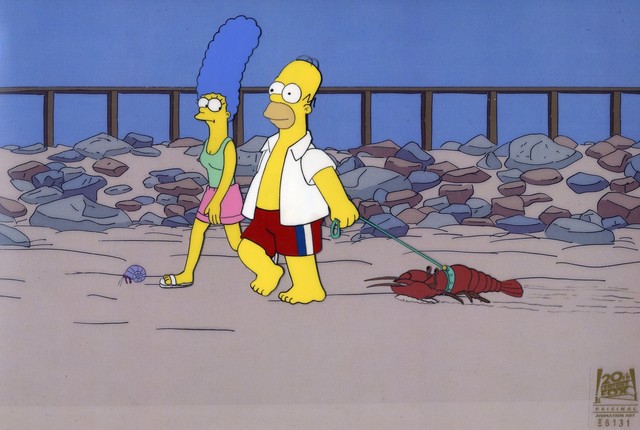
A surrealist in his own right, Nerval inspired the great writers such as T.S Eliot and Proust as a man who explored the borders of imagination and reality, sanity and insanity, writing often about his experience with his hallucinations in his prose. While the story of his promenades with a lobster has been preserved as a moment of humour and satire in our historical understanding of the Bouzingos and their lifestyle, it is pointed out by those who have examined this story that it may not have been so funny in the eyes of Nerval himself.
Nerval wrote:
“So you alone are blessed, you free-thinking man,
In a world where life sprouts in everything?
You seize the liberty to dispose of the forces you hold,
But in all your plans a sense of the universe is lacking.Honor in each creature the spirit which moves it:
Vers dorés (1845)
Each flower is a soul moved by Nature’s face;
In each metal resides some of love’s mystery;
‘All things feel!’ And all you are is powerful.”
It is speculated that while this outing with Thibault may have been an act of Nerval’s insanity, it is also suggested that perhaps this could have been a philosophical statement, one which speaks to the sentience of all beings and our human relationship to them. The ribbon being the benign tie between humans and the creatures of the earth. This is perhaps in relation to the much argued deep sensitivity and sentience of lobsters specifically. Regardless of rhyme or reason, it became an iconoclastic act of creative expression.
Another of the forgotten Bouzingos, one which specifically inspired the Parnassianism movement, was Theophile Dondey, who moved writers of the avant-garde to stretch their vernacular, brining terms like “dandyism” into the mainstream. He was a romantic poet, gothic, and bohemian writer which inspired many a celebrated artist of the modern age, including Baudelaire.
The poet Philo thee O’Neddy (aka Theophile Dondey) was a co-founder of the Bouzingo group and one of the most influential writers of the very early avant-garde. Embodying the gothic energy of Frenetic Romanticism, from which Baudelaire, Lautreamont, the Decadents and Surrealists drew heavy inspiration, his poems such as “Spleen ”, “Dandyism ”, and “Neuralgia ”, became key themes in 19th century counterculture.
Perhaps the intention of the bouzingos was to have a place to be safe outside of all of the boxes prescribed to each of us. Maybe they were just kids being kids, living with mental health issues and using the stresses and unique problems of their world to liberate themselves through art, and the rejection of common practices and standards. But whoever they were, they certainly paved the way.
Further reading: Resurrecting the Bouzingo / Revenance: A Zine of Hauntings from Underground Histories


